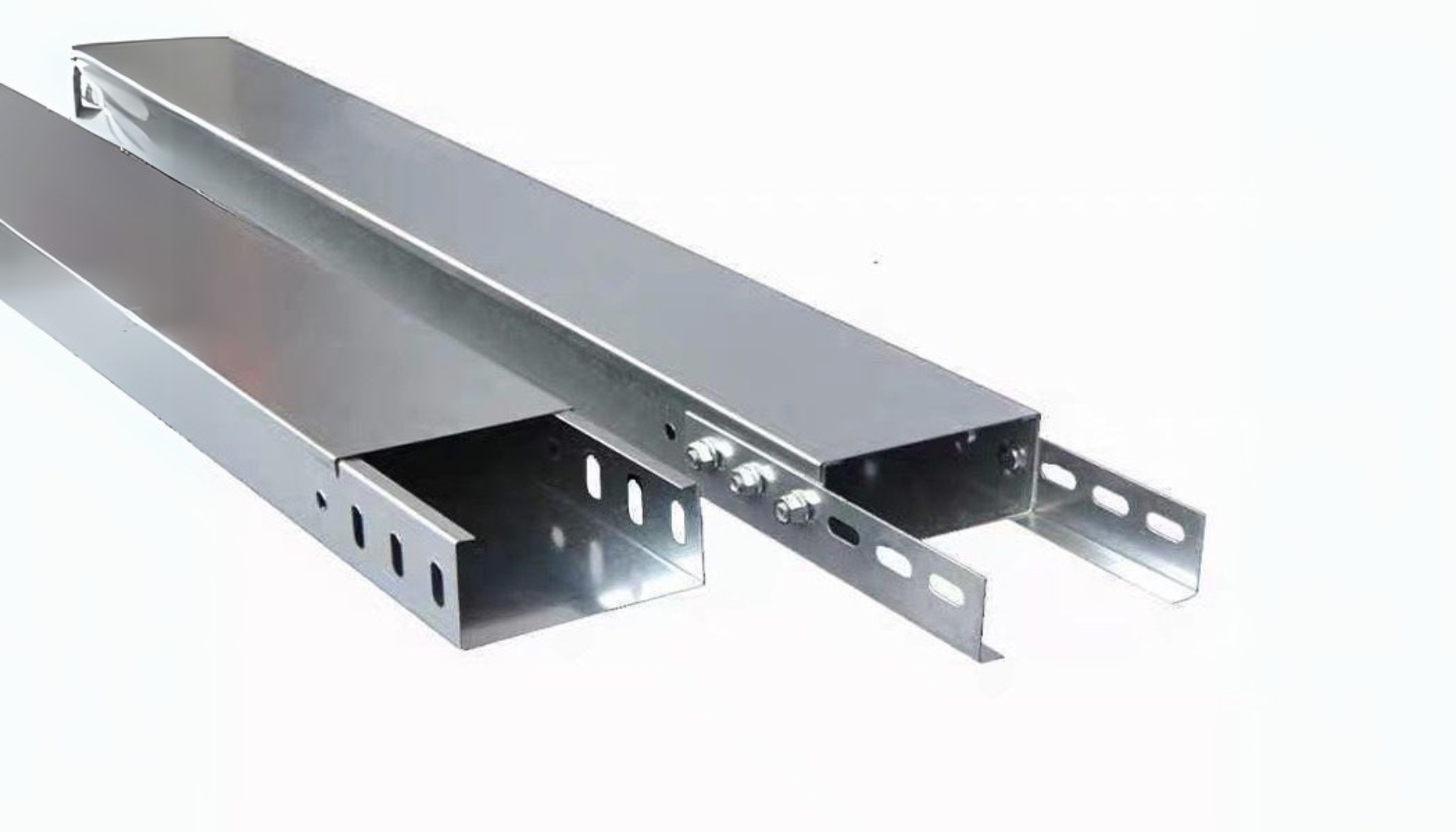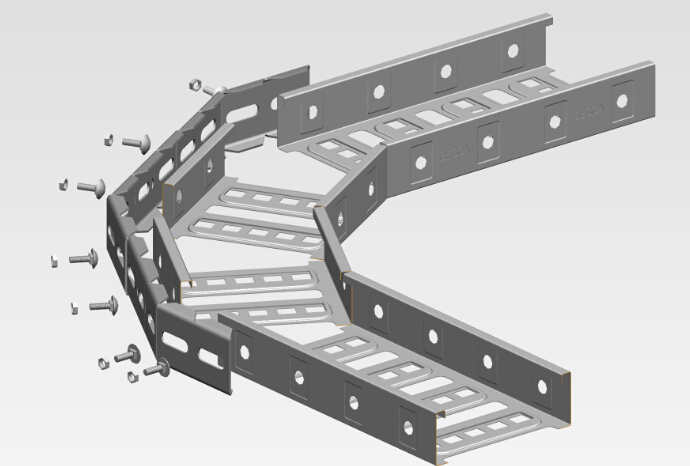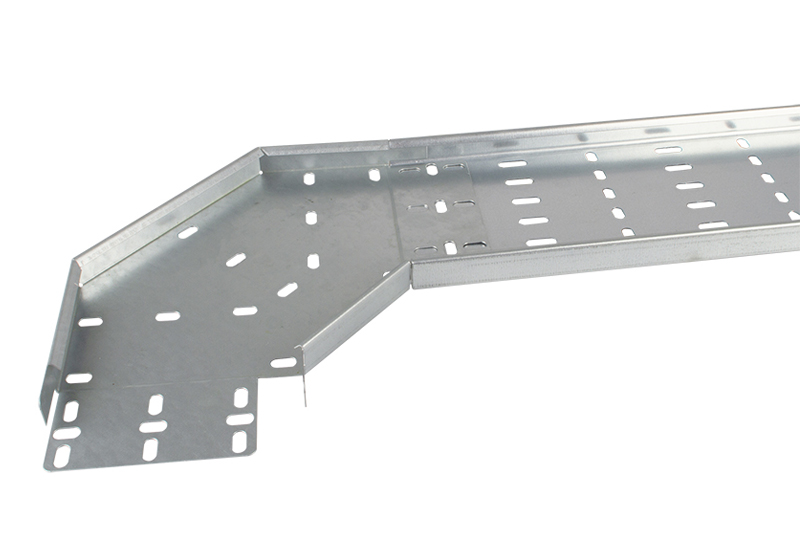
When it comes to organizing IT and electrical cables, selecting the right solution can feel like navigating a maze. Imagine walking into a server room, and instead of chaos, you’re met with neatly routed cables, safely tucked away in a robust steel cable tray. This guide will walk you through everything you need to know about choosing the perfect steel cable tray for your needs, from understanding types to ensuring long-term performance, or making a stainless steel cable tray price list.
The Backbone of Cable Management: Steel Cable Trays
Think of a steel cable tray as the foundation of a skyscraper—it supports everything. Whether you’re managing power cables in an industrial setting or Ethernet cords in an office, a reliable tray ensures safety and accessibility. Steel cable trays are prized for their strength and durability, making them a go-to choice for demanding environments.
Stainless steel cable trays add an extra layer of reliability. Resistant to rust and corrosion, they thrive in humid or outdoor environments. From heavy-duty electrical work to lightweight IT setups, stainless steel ensures cables stay safe, functional, and protected from wear and tear over the long term.
Basket or Perforated? Decoding Cable Tray Types
Choosing between a stainless steel basket tray and a perforated cable tray can feel like picking between apples and oranges. Basket trays are lightweight and flexible, perfect for IT installations where airflow and easy adjustments are key.
On the other hand, perforated trays provide robust support and better ventilation, making them ideal for electrical systems with heavier cables. Both options excel in different scenarios, making the choice dependent on your project needs and cable type.
Wire or Solid? The Debate Between Tray Designs
For those prioritizing flexibility, a stainless steel wire basket tray might be the best fit. These trays offer superior ventilation, reducing heat buildup around cables. Their open design allows for easy modifications and repairs, making them especially useful in dynamic setups.
However, if you need maximum protection from physical damage or heavy loads, a solid tray like a ladder cable tray or perforated design is your best bet. These trays provide robust coverage while maintaining adequate ventilation, balancing safety and functionality.

Sizing Your Cable Tray: No Room for Error
Incorrect sizing can lead to a world of headaches. Picture a cable tray too small for your needs—it’s like trying to fit a gallon of water in a pint-sized jar. Always calculate the total cable load and account for future expansion plans to avoid costly missteps.
Oversized trays aren’t the answer either. They may waste valuable space and create unnecessary expenses. Proper cable tray sizing as well as making a stainless steel cable tray price list ensures your installation is both efficient and cost-effective, supporting your cables without compromise.
Material Matters: Why Stainless Steel is the Star Player
Among the sea of options, stainless steel reigns supreme. Whether it’s a stainless steel wire tray or a heavy-duty stainless steel cable tray, the material offers unmatched durability. Its resistance to corrosion and rust makes it ideal for challenging environments, while its longevity reduces the need for replacements.
Additionally, stainless steel is eco-friendly and easy to maintain, making it a practical choice for projects where reliability and sustainability are key. With its sleek appearance, it also adds a professional touch to installations.
Comparing Electrical Cable Tray Types
When it comes to electrical cable tray types, each design offers unique advantages. Ladder trays are excellent for heavy-duty industrial cables, offering strength and support for large bundles. Basket trays, with their open design, are better suited for lightweight IT cables that require maximum airflow.
Perforated trays, meanwhile, provide a balanced solution. They offer ventilation for heat dissipation and solid support for moderate to heavy loads, making them a versatile option for a range of installations.
Efficiency with Cable Management Systems
A well-planned cable management tray isn’t just about aesthetics; it’s about safety and efficiency. Properly managed cables reduce the risk of overheating and make troubleshooting easier.
Whether it’s a desk wire management tray for office setups or a cable tray for ceiling installations in industrial spaces, there’s a perfect solution for every environment. These systems keep cables accessible while maintaining a clean, organized appearance.
Catering to Diverse Needs with Cable Trunking and Tracks
For larger installations, a metal cable trunk or cable tracks might be necessary. These robust systems protect cables from mechanical damage and environmental factors, making them suitable for industrial use.
Cable tracks also simplify maintenance by keeping cables grouped and organized, allowing for quick identification and minimal downtime during repairs or upgrades.
Installation Tips: Getting It Right the First Time
Installing cable trays isn’t rocket science, but it does require precision. Ensure you have the right tools, measure accurately, and secure the trays firmly to walls, floors, or ceilings as required.
For overhead installations, like a hanging cable tray, check the stability of your mounting brackets to prevent accidents. Taking time to plan your installation thoroughly will save you from costly mistakes later.

Exploring Cost: Is Stainless Steel Worth It?
While stainless steel options may come with a higher price tag, the long-term benefits often outweigh the initial cost. They offer durability, minimal maintenance, and a sleek appearance that adds value to your project.
Reviewing a stainless steel cable tray price list will help you budget effectively and decide between different options. Keep in mind that quality is an investment—particularly in environments where safety and reliability are non-negotiable.
Ceiling and Floor Cable Trays: Maximizing Space
A cable tray for ceiling installations keeps your workspace clutter-free and cables accessible. By suspending trays from the ceiling, you can maximize floor space while maintaining easy access for maintenance.
Similarly, a floor cable tray provides underfoot routing, protecting cables while keeping walkways safe and organized. Both options demonstrate how cable trays can adapt to different spatial constraints.
Meeting Industry Standards: Choosing the Right Manufacturer
Partnering with reputable stainless steel cable tray manufacturers is crucial for quality assurance. A reliable manufacturer offers solutions tailored to your specific needs, whether you need a galvanized steel cable tray or a stainless steel perforated cable tray design.
Look for manufacturers who prioritize compliance with industry standards, offer durable products, and provide ongoing support. A strong partnership ensures your cable management system meets the highest performance and safety benchmarks.
Conclusion
Selecting the right cable tray can transform a chaotic setup into a streamlined, efficient system. With options ranging from sturdy stainless steel basket trays to versatile ladder designs, there’s a solution for every need. Keep durability, size, and future expansion in mind as you make your choice. Your cables—and your peace of mind—will thank you!
Partnering with a reputable cable tray manufacturer and supplier ensures you get high-quality, durable solutions tailored to your specific needs. With expert guidance, compliance with industry standards, and reliable support, you can trust them to deliver products that enhance safety, efficiency, and performance. Choosing the right partner makes all the difference in creating a robust cable management system.
- Ready-to-Assemble Steel Structure to Sudan for the United Nations – Case Study
- Which Steel Cable Tray Type is Best? A Look at Perforated, Ladder, Wire Mesh & Flexible Trays
- The Impact of Temperature Variations on Cold Storage Warehouses in Different Cities of Uganda
- The Impact of Factory Shed Layout on Workflow Efficiency
- Uganda’s Rising Demand for Cold Storage Builders in the Logistics Industry
